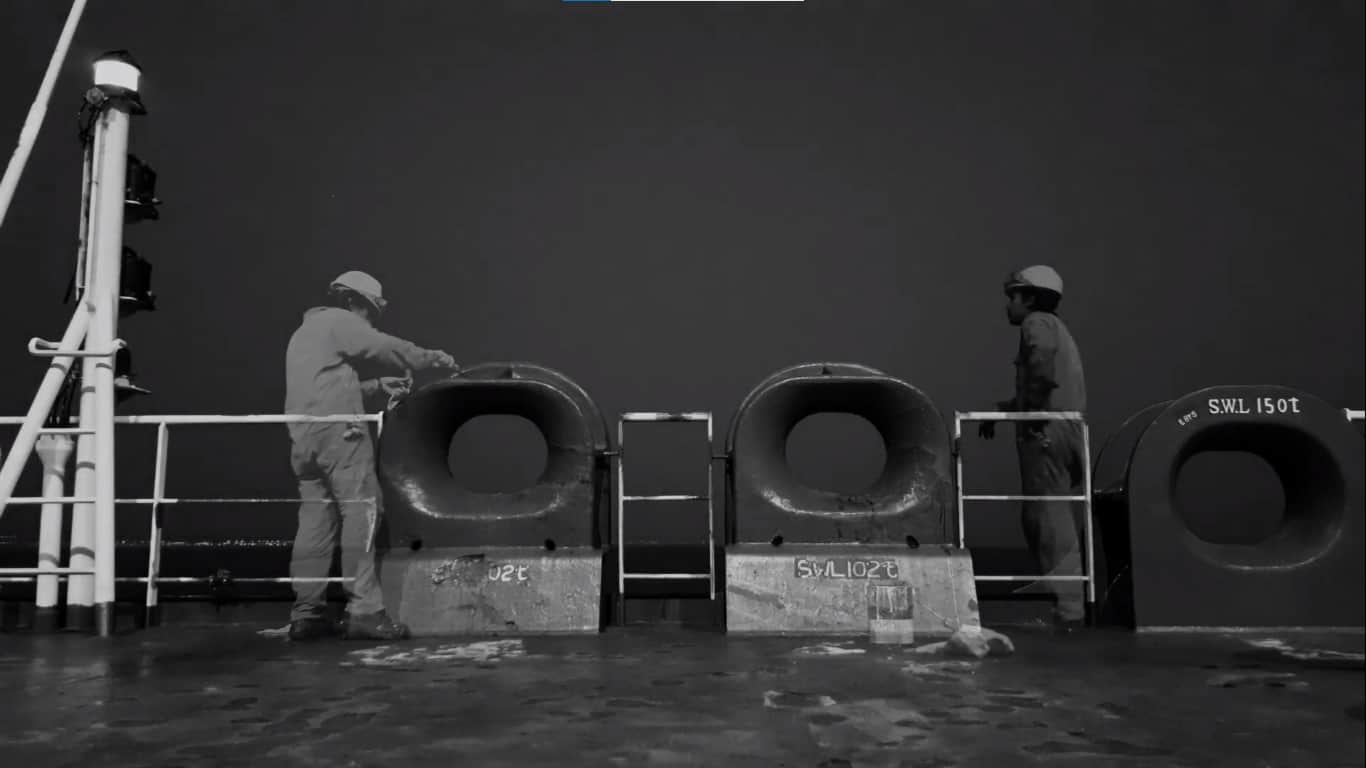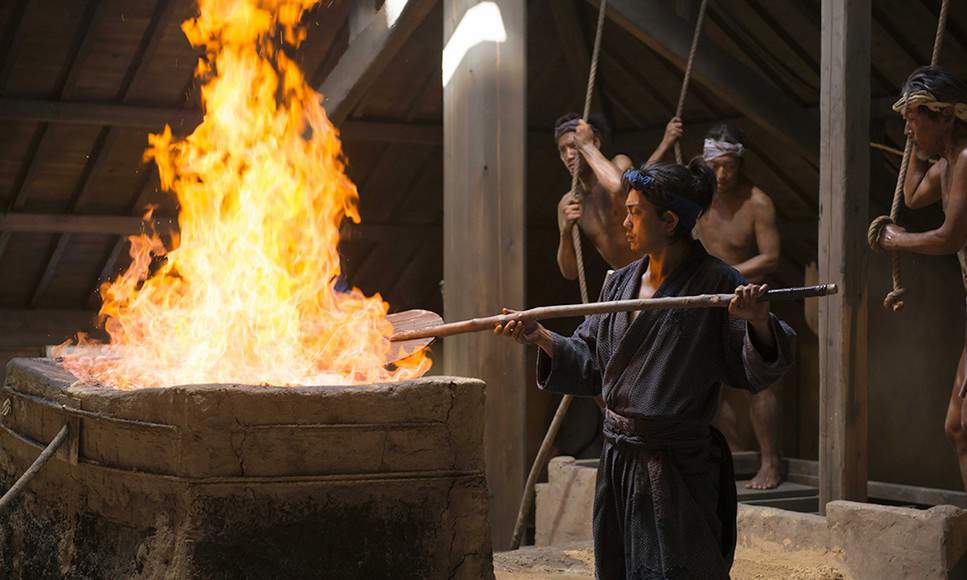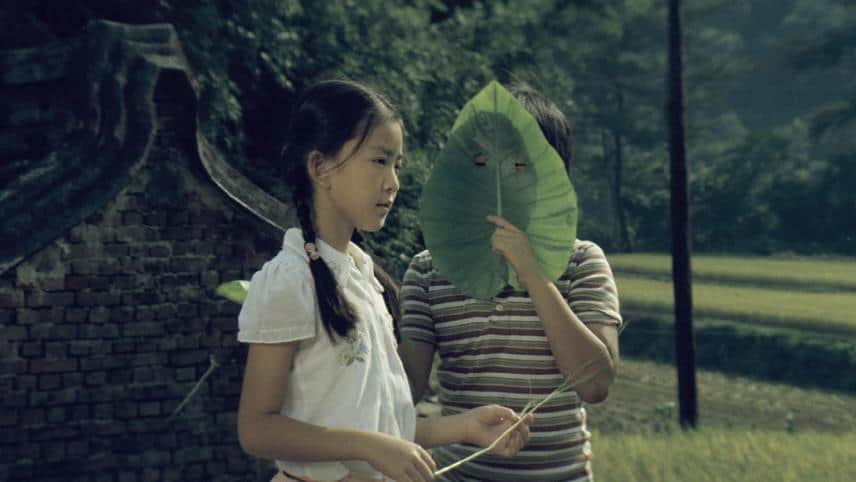I remember the first time I became conscious of Nam June Paik's existence. I was still a high school student, starting to figure out my interest in art history. My teacher had assigned us to particular sculptures in the Samsung Leeum Museum to write about. Then there I was, at the tender age of sixteen, face-to-face with “My Faust-Communication, 1989-1991” – a Gothic portal enshrining a gridded stack of videos. Little did I know that this encounter would mark the first of many to come.
Nam June Paik: Moon is the Oldest TV was nominated for the Grand Jury Prize in Sundance's US Documentary Competition. Its distribution is now handled by Dogwoof and Greenwich Entertainment, and the film will begin its US theatrical release on 24 March 2023.

It seemed like I found him in every art-related corner of my world. I ran into him in other exhibitions at home (DDP, 2016); in the Whitney (“Electronic Superhighway”, 1995); at street corners of Cincinnati (“Metrobot”, 1988); at the Tate Modern (“The Future is Now,” 2019). When the last exhibition at the Tate followed me to San Francisco, I felt like the Father of Video Art was an omnipresent specter of sorts. To me, the Father of Video Art seemed to preside over my own deeper dive into contemporary art history.
Imagine my pleasant surprise, then, to stumble upon him again in Park City, with Amanda Kim's directorial debut, “Nam June Paik: Moon is the Oldest TV” (2023). Appropriate to a documentary on this globetrotting star, Kim's cast is similarly diasporic. She hires Steven Yeun to read aloud Paik's personal correspondences, while she interviews contemporary curators like David Ross. Paik, she cheekily notes, was familiar with many languages – but was a master of none. In this vein, she chronologically records Paik's international adventures. From a Japanese-occupied Korea to refuge in Hong Kong, from education in Japan and West Germany to a job in the US, Kim follows Paik's ventures across oceans. Somewhere in the middle, Paik finds himself fortuitously immersed in the art circles of the Fluxus avant-garde including the likes of John Cage, Jonas Mekas, Yoko Ono, and crucially, his longtime collaborator, Charlotte Moorman.
While Kim's documentary seems to be written out of a genuine acceptance of Paik's international legacy, “Moon is the Oldest TV” triumphantly returns to his Korean heritage at the end of the day. She kicks off this chapter in the documentary as he did with his life, with “Good Morning Mr. Orwell” (1984) – a televised broadcast that had over six million South Korean viewers. Kim's retelling of Paik's own ethnicity seems to seamlessly ease him back into the country of his birth over thirty years after he had left it last. The living truth of his livelihood, however, is more complicated than that. Though the South Korean government now trumpets Paik as one of its own, his own identification with the nation of his birth – one that had went through colonization, civil war, and US occupation – is still a complicated matter to untangle.
In a similar note, Kim's approach towards him seems rushed. This isn't so much about the presentation. (Though yes, “Moon is the Oldest TV,” is frenetically cut MTV-style with analog television effects, as if to harken to Paik's own work with cathode-ray TV's.) This is more about the depth of research involved. Kim does dig through a formidable archive of written confessions and does painstakingly take us through Paik's oeuvre. However – perhaps because most of her resources tend to be more professional partners than personal – Kim's portrayal of Paik ends up being more polished than zany. She captures his unruly energy in the same way a catalog essay might: through the socially-accepted veneer of capital-G Greatness.
Instead of feeling closer to Nam June Paik, then, one almost senses more of a distance between themselves and the subject. “Nam June Paik: Moon is the Oldest TV” repackages the video artist's legacy neatly, but not personally; it relishes his career more than his person. This isn't to say that the documentary is not informative nor aesthetically pleasing to watch. It just presents the obituary more than it does the man.















